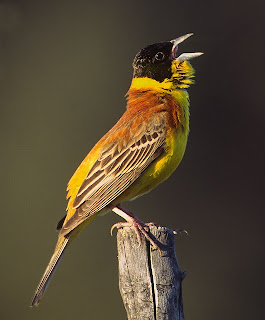Ranthambore National Park in Rajasthan is one of the most visited national parks in India. Ranthambore is renowned for its tiger and it is believed that this wildlife sanctuary offers the highest probability of tiger spotting in their natural habitat.
Ranthambore is located in Sawai Madhopur in Rajasthan. It used to be the hunting ground of the former maharajas of Jaipur. At the centre of Ranthambore National Park is the 10th-century Ranthambore Fort. You could also notice an array of ancient temples, several talaos (lakes) and chhatris inside this wildlife reserve in Rajasthan.
Ranthambore National Park Travel Facts
Location: Sawai Madhopur district of Rajasthan
Highlights: Tigers and over 250 bird species
National Park area: 275 km² core area. 392 km² including buffer zone
Tiger Reserve area: 1334 km²
Altitude: 215 to 505 meters above sea level
Eco-region: Kathiarbar-Gir dry deciduous forests
Terrain: Dense tropical dry forest, open bushland and rocky terrain interspersed with lakes and streams
Best Season: From November to March
Best Time for Tiger Spotting: March-June
Closed: Monsoon season (July - August)
How to reach: Sawai Madhopur is the nearest railway station 11 km away. Kota Station 110 km away has a halt of all the trains for 10 min and connects Sawai Madhopur with almost 50 trains. Closest airport is Jaipur at 130 km.
Introducing Ranthambore National Park
A seamless blend of heritage, history and nature, Ranthambore National Park is located around the historical Ranthambore Fort, now a UNESCO inscribed World Heritage Site. Sprawling over an area of 392 square kilometers, Ranthambore Park is the most popular tiger reserve.
Situated strategically at the meeting of Aravali Hills with Vindyas Plateau, Ranthambore’s vivid topography is an amalgamation of dense forest, deep gorges, turquoise lakes with a 10th century fort in its heart that blend seamlessly with the surroundings.
 |
| Ranthambore Fort is a UNESCO inscribed World Heritage Site |
Ranthambore National Park offers perfect ambience to spot tiger owing to its small size, high density of tiger per sq. km and vegetation which is dry deciduous forest and open bush land.
Ranthambore National Park Climate
Climate at a Glance
- Subtropical, dry climate with distinct winter, summer and rainy season.
- Highest Temperature = 49.0C (May–June)
- Lowest Temperature = 2.0 C (December–January)
- Average Rainfall = 800 mm
- Monsoon = July to September
- Humidity = 10–15%(summer), 60%(rainy)
- Visit Season = Nov-May (National Park remains closed in Monsoon)
Summer (March to June) in Ranthambore is extremely hot and rather punishing in May and June. Maximum temperature in summer could reach as high as 46°C and the minimum temperature recorded is 23°C.
Although very hot, May-June is considered to be the ideal time for spotting tigers in Ranthambhore National Park.
Winters (November to February) in Ranthambore are pleasant making it much favorable time to visit the park and explore its rich flora and fauna. The temperature varies from maximum of 32°C to a minimum of 4°C.
Wildlife in Ranthambore National Park
Ranthambore National Park has a vivid topography. It is nestled at the joining of Aravali Hills and Vindhya Plateau which gives it’s the typical topography of rocky plains, dry deciduous jungle and high cliffs.
This National Park in India is home to over 30 mammals, 12 species of reptiles including the Marsh Crocodile & amphibians and 272 bird species.
Mammals in Ranthambore
Ranthambore National Park is renowned for its Royal Bengal Tigers which have been part of many a National and International travel documentaries. Other major wild animals include leopard, Nilgai, Jackal, Wild Boar, Sambar, Mongoose, Hyena and Sloth Bear.
Reptiles in Ranthambore
There are over 12 species of reptiles that live in their natural habitat at Ranthambore. Reptilian species in Ranthambore National Park include Snub Nosed Marsh Crocodiles, Ganga Soft Shelled Turtles, Tortoise, Banded Kraits, Cobras, Common Kraits, Vipers, Desert Monitor Lizards and the Indian Chamaeleon.Avifauna in Ranthambore
Although Ranthambore is more popular for its friendly tigers, few visitors are aware of the fact that Ranthambore National Park is home to over 300 species of birds.
In fact Ranthambore National Park could be a birdwatcher’s paradise with list of spotted avifauna including Black Francolin, Blue Breasted Quail, Red-Crested Pochard, Eurasian Wryneck, Indian Gray Hornbills, Asian Palm Swift, Eurasian Eagle Owl, Nightjars, Chestnut-Bellied Sandgrouse, Great Crested Grebe, Eagles, Darters, Black-Headed Bunting, Egrets, Herons, Yellow-Legged Gull, Flamingos, Ibis, Pelicans, Storks, Pittas, Shrikes, Stork Billed Kingfisher, Bee Eaters, Eurasian Cuckoo, Parakeets and Tree Pies among others.
 |
| Black-headed Bunting, Birds of Ranthambore |
 |
| Chesnut-bellied Sandgrouse - Birding in Ranthambore |
 |
| Eurasian Eagle-Owl, Ranthambore National Park |
 |
| Yellow-crowned Woodpecker |
If you are visiting especially for bird watching, then some of the best locations for bird watching are Malik Talao, Rajbagh Talao, Padam Talao and the Jhalra area.
Ranthambore National Park Wildlife Safaris
There are 2 options available when it comes to choice of the vehicle for safari in Ranthambore; either open top gypsy with seating capacity of 6 or the open top canter with seating capacity of 20.
Safari in Ranthambore is available in 2 shift per day; one in the morning at 7:00 AM and other in the evening at 2:00 PM. Each ride last for 3 and a half hour.
Traffic into the park is highly regulated and private vehicle are not allowed. At one time only 20 vehicles are allowed inside split along 5 different zones.
Ranthambore Safari Cost
Indian Nationals need to pay INR 78 and INR 75 per person for safari in canter (petrol engine) and canter (diesel engine) respectively.
Foreign Nationals need to shell out INR 478 and INR 475 respectively for the same.
For safari in open top gypsy Indian Nationals need to pay a fee of INR 135 and INR 131 for Petrol Gypsy and Diesel Gypsy respectively.
Each passenger (irrespective of Nationality) has to pay an additional charge of INR 330 at the time of collection of boarding pass at the entrance of the park.
A guide fee of INR 67 in Gypsy and INR 20 in Canter is also charged for the safari.
How to reach Ranthambore National Park
Ranthambore by Air
The closest airport to Ranthambore National Park is in Jaipur 130 km away. It takes around four hours to reach Ranthambore from Jaipur by road.Ranthambore by Train
The nearest railway station from Ranthambore is at Sawai Madhopur which is 11 km away. Sawai Madhopur is well connected via rail route from Delhi, Jaipur and Agra. Alternatively, Kota Station 110 km away connects Sawai Madhopur with almost 50 trains. All trains passing through Kota halt there for minimum 10 minutes.Distance by road:
Delhi - 450 km, Jaipur - 180 km, Kota 110 kmPacking Tips for Ranthambore Safari
The climate varies from extremely cold to extremely hot from winter to summer in Ranthambore. It is always advisable to carry warm cloths during winters (November-February) and light clothing for summer (March-June).
It is also advisable to wear clothing with natural colors that blends in with the natural surrounding so as to not to disturb or distract the animals.
Additional information for planning Ranthambore Tiger Safari
- Indian tourists need to carry a photo-id proof (passport, driving license, etc.) or any other identification proof provided while booking.
- Foreign tourists need to carry their passport for identification purpose while making a booking and entering the park.
- Id-proof to be submitted at the time of receiving boarding pass
- Children up to 5 years can accompany their parents, but extra seat will not be provided
- Video Camera fee – Rs. 400/-; Still Camera – free; Professional Video & Movie Camera or for Feature Films –permitted only with the permission of Chief Wildlife Warden, Jaipur.
- Camera Fees have to be deposited at the time of receiving boarding pass or at the entry gate.
Here's a bonus tip, if you are looking for further wildlife adventure in India. Try our travel guide on Periyar National Park. Or if it is the Single-horned Rhinos that you are looking forward to along with the tigers and great tuskers, you should head to Kaziranga National Park which is one of the finest wildlife sanctuaries in India as well as a UNESCO World Heritage Site.
Looking for more? Check out the best national parks and wildlife reserves in India.
Contributed by Nikhil Chandra














Wow. Ranthambore National Park is one place I have been wanting to visit for a long time now. After reading this, I guess I have to plan for a trip there.
ReplyDeleteThanks for such detailed information.
Pleasure is all mine Karan. I am glad that that this write up of mine has generated enough interest in you to make you plan a trip. And I guess this is why we write. Because traveling is good :-) Do share your experience when you visit this gem of a national park. Personally I feel that Ranthambore is the best wildlife santuary in India. I am sure you are going to love it!
DeleteRanthambore is one of the best National parks of India. Your fast facts section is appreciable. Thank you for sharing.
ReplyDeleteI agree Sanjay...It's one of the best. Personally I feel its the best :-) Have you been there?
DeleteRanthambore definitely is up there when it comes to tiger spotting in their natural abode. I have been to Ranthambore and I'd rate is as the place to be if you want to see the tigers as I did in my very first visit this March.
ReplyDeleteBut the gem of this wildlife sanctuary is the crumbling ruins of the Ranthambore Fort, after which this National Park is so named. It's ruins are both a reminder of its glorious past and the truth that "Cities and Thrones and Powers, Stand in Time's eye, Almost as long as flowers, Which daily die"
Nice write up. Will definitely recommend to those planning their trip to Ranthambore National Park.